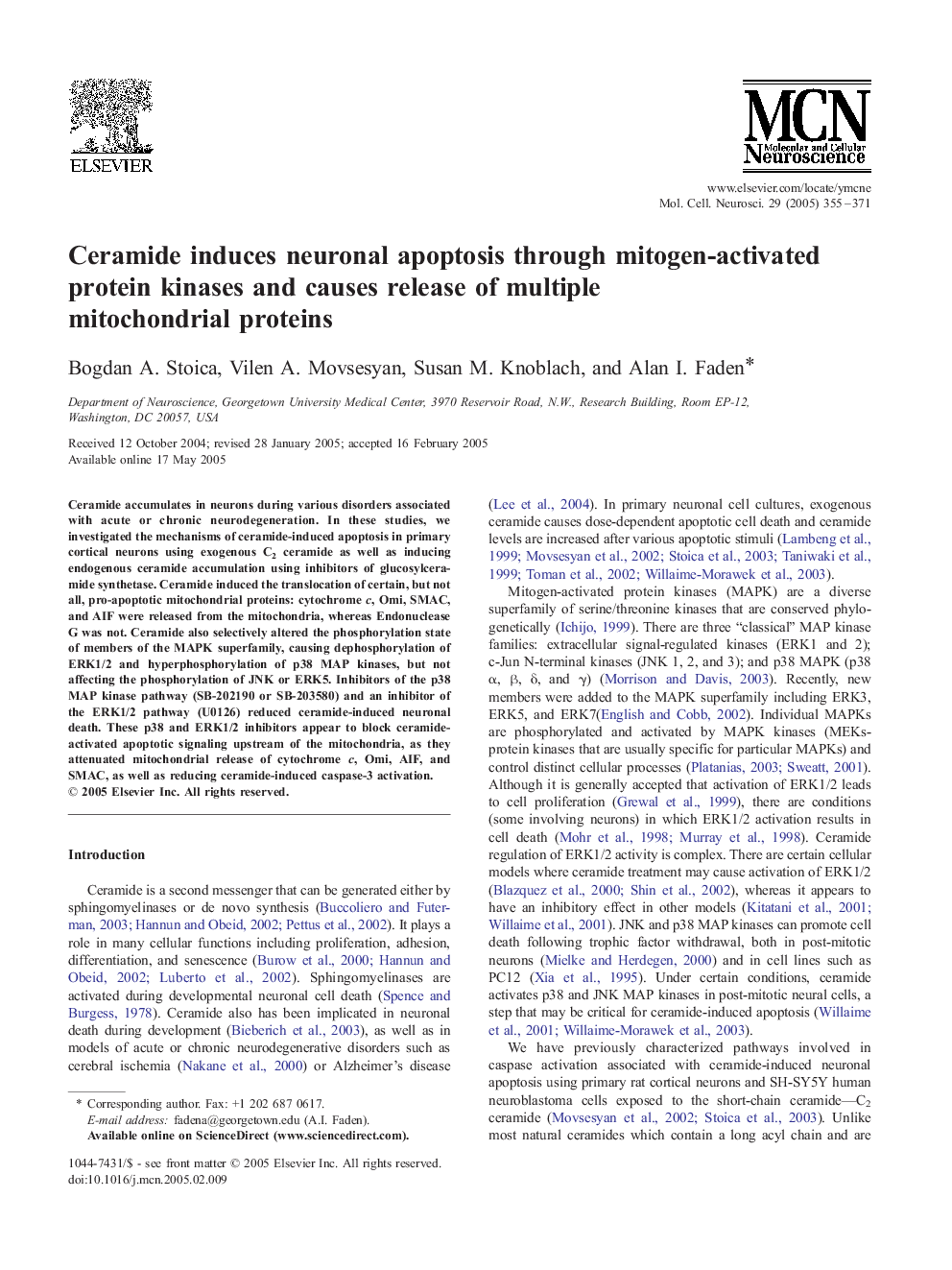| Article ID | Journal | Published Year | Pages | File Type |
|---|---|---|---|---|
| 10956886 | Molecular and Cellular Neuroscience | 2005 | 17 Pages |
Abstract
Ceramide accumulates in neurons during various disorders associated with acute or chronic neurodegeneration. In these studies, we investigated the mechanisms of ceramide-induced apoptosis in primary cortical neurons using exogenous C2 ceramide as well as inducing endogenous ceramide accumulation using inhibitors of glucosylceramide synthetase. Ceramide induced the translocation of certain, but not all, pro-apoptotic mitochondrial proteins: cytochrome c, Omi, SMAC, and AIF were released from the mitochondria, whereas Endonuclease G was not. Ceramide also selectively altered the phosphorylation state of members of the MAPK superfamily, causing dephosphorylation of ERK1/2 and hyperphosphorylation of p38 MAP kinases, but not affecting the phosphorylation of JNK or ERK5. Inhibitors of the p38 MAP kinase pathway (SB-202190 or SB-203580) and an inhibitor of the ERK1/2 pathway (U0126) reduced ceramide-induced neuronal death. These p38 and ERK1/2 inhibitors appear to block ceramide-activated apoptotic signaling upstream of the mitochondria, as they attenuated mitochondrial release of cytochrome c, Omi, AIF, and SMAC, as well as reducing ceramide-induced caspase-3 activation.
Related Topics
Life Sciences
Biochemistry, Genetics and Molecular Biology
Cell Biology
Authors
Bogdan A. Stoica, Vilen A. Movsesyan, Susan M. Knoblach, Alan I. Faden,
